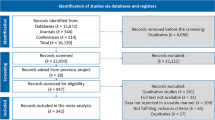Abstract
Although during the 1997–98 academic school year, only 25% of the English Language Learners (ELLs) in elementary schools throughout California were receiving some form of bilingual education, the ramifications of the passage of Proposition 227 in June of 1998 were multiple for the teachers, interns, and children involved. The legislative language of Proposition 227 was sufficiently vague and thus created other problems. The proposition was challenged in the California state court system as soon as the ballots were counted. This constitutional challenge further clouded an already murky situation. Districts were receiving little if any clarification from the California State Department of Education in regard to the time lines for implementation of the new law. The law, itself, spoke to specific changes and curriculum, but there was no money to create the new curricular approach, time to in-service teachers in the new methodology to be utilized, or a framework and time line for implementation of the mandated changes.
Because of the wording that attempted to hold teachers and administrators personally liable to civil suit for noncompliance, many districts interpreted the new law as conservatively as possible to avoid such litigation. In other districts changes were made site by site as a response of the particular administrator. This type of erratic policy implementation across large district was very demoralizing for most bilingual teachers. It also confused the parent communities. It made no sense to the average person that if a child was at School A s/he could be receiving primary language instruction while a child at School B only a mile away and in the same school district could not even ask the teacher questions in his/her home language without being told, “Only speak English at school.”
Similar content being viewed by others
REFERENCES
California Department of Education (1997). Guidelines for Language, Academic, and Special-Education Services Required for Limited-English-Proficient Students in California Public Schools, K-12. Sacramento: California Department of Education.
Castaneda v. Pickard. 648 U.S. 989 (1981).
Flood, J., and Lapp, D. (December 1996-January 1997). Literacy instruction for students acquiring English: Moving beyond the immersion debate. Reading Teacher 50(4): 356-366.
Gándara, P., Maxwell-Jolly, J., Garcia, E., Asato, J., Gutiérrez, K., Stritikus, T., and Curry, J. (April 2000) The Initial Impact of Proposition 227 on the Instruction of English Learners. Davis: UC Linguistic Minority Research Institute Education Policy Center University of California.
Grant, C. A. (1994). Best practices in teacher preparation for urban school: Lessons from multicultural teacher education literature. Action in Teacher Education 16(3): 1-18.
Lau v. Nichols. (1974). 414 U.S. 563.
San Diego County Office of Education (1998). Proposition 227 Handbook. San Diego: Author.
Zehr, M. (2000). Bilingual instruction in California less consistent since proposition 227. Education Week, May 3.
Author information
Authors and Affiliations
Rights and permissions
About this article
Cite this article
Tórrez, N.M. Incoherent English Immersion and California Proposition 227. The Urban Review 33, 207–220 (2001). https://doi.org/10.1023/A:1010314020649
Issue Date:
DOI: https://doi.org/10.1023/A:1010314020649




